Integrating your LDAPS (Lightweight Directory Access Protocol over SSL) or Active Directory with the ID123 ID Management System (IDMS) allows for seamless synchronization of user data for issuing digital ID cards. Follow this step-by-step guide to connect and schedule your data sync.
Step 1: Access the Integrations Menu
- Log in to your IDMS administrator account at app.id123.io.
- From the left-hand navigation panel, click on “Integrations”.
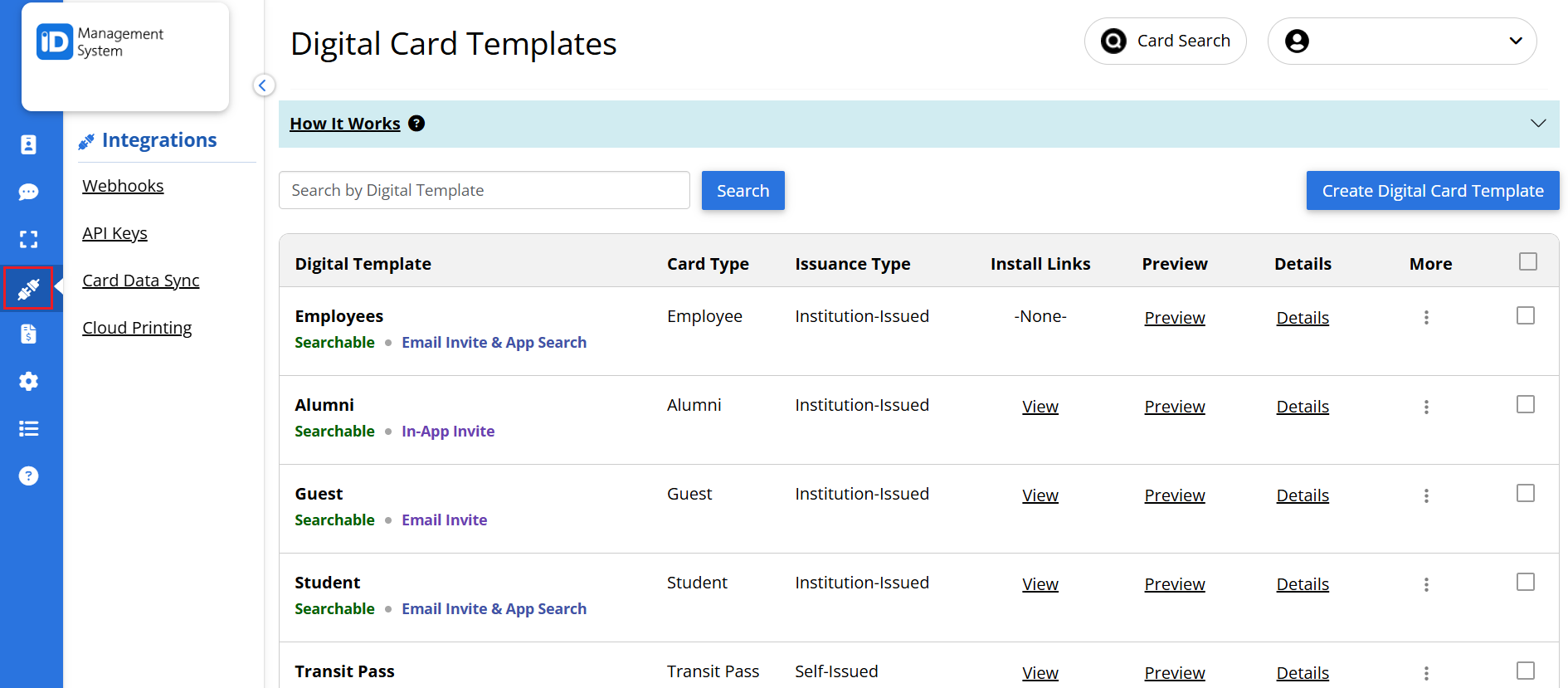
Step 2: Go to Card Data Sync
If this is your first time setting up a sync integration click on “Card Data Sync” under the Integrations section.
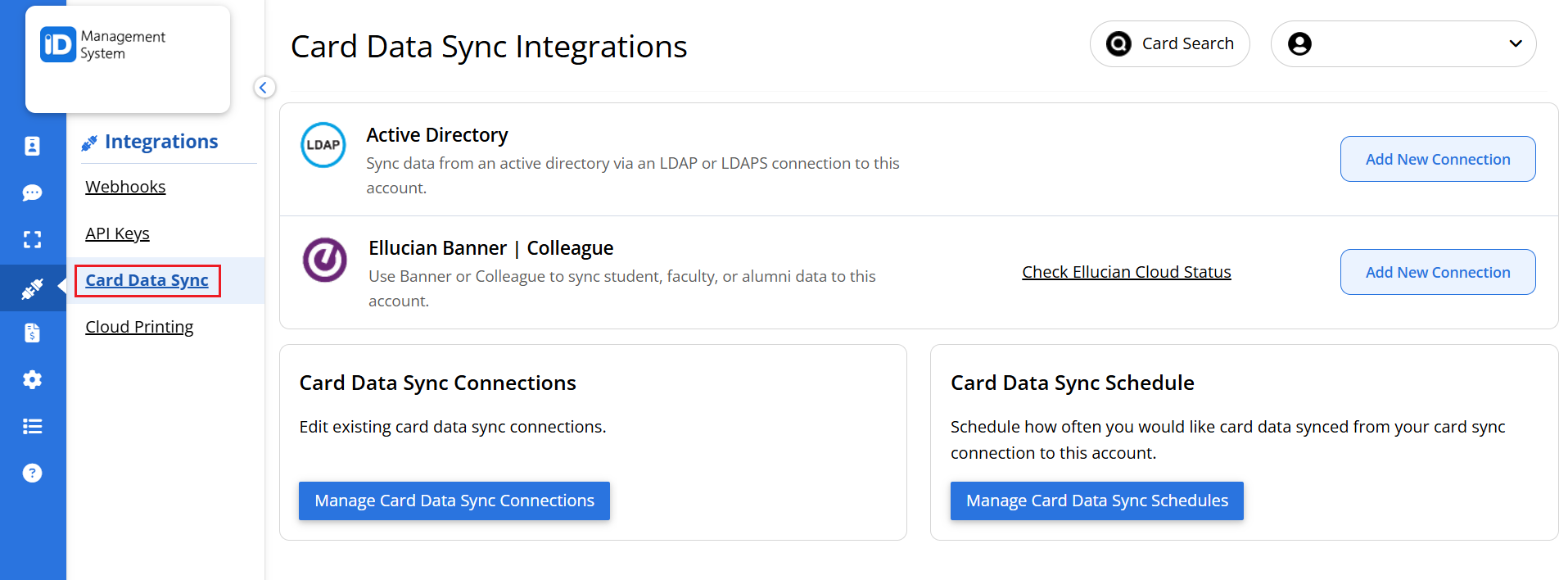
Step 3: Add a New Connection
On the Sync Connections page, click the “Add New Connection” button located in the top right corner.
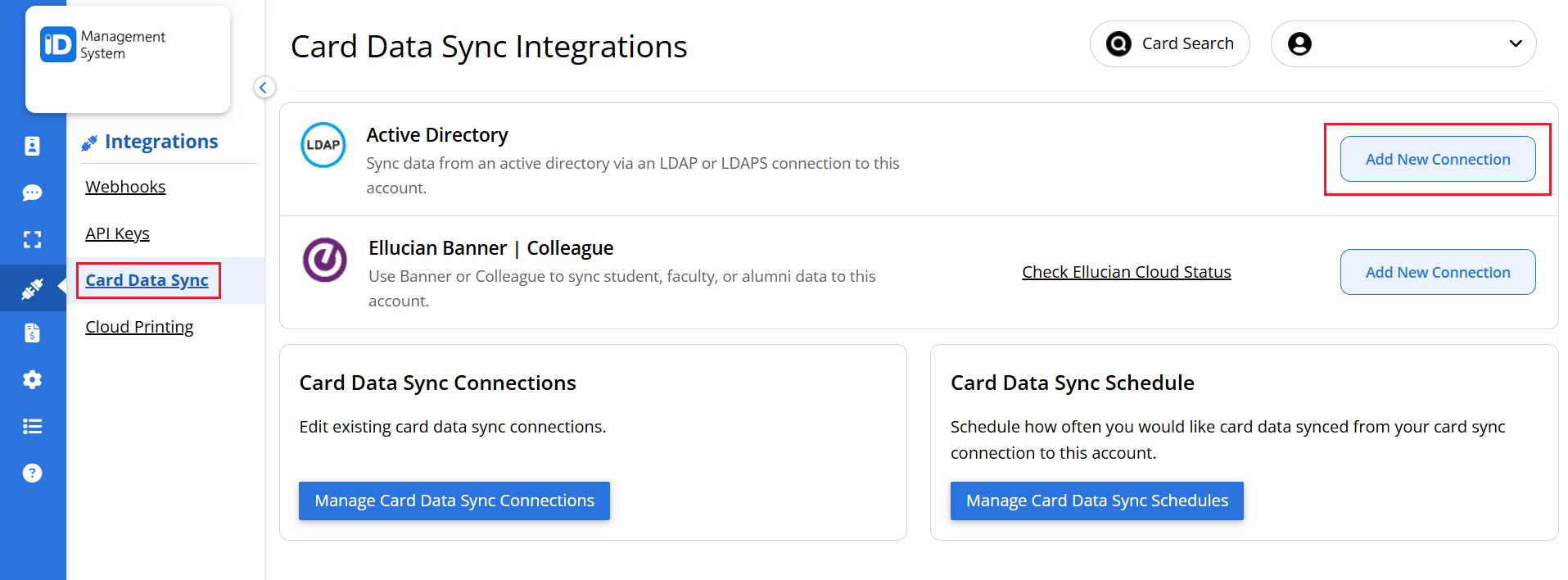
Step 4: Configure LDAPS/Active Directory Connection
- In the “Connection Type” dropdown menu, select “Active Directory/LDAP”.
- Enter a name for your integration in the “Integration Name” field.
- Fill out the required details in the Active Directory Server and Authentication sections.
- To enable LDAPS, upload your CA certificate (with a .crt or .pem file extension) in the Authentication section.
- This certificate is used to verify the Certificate Authority (CA) signature on your server certificate before establishing a secure connection.
- Click “Save” to complete the setup and confirm that the connection is successfully established.
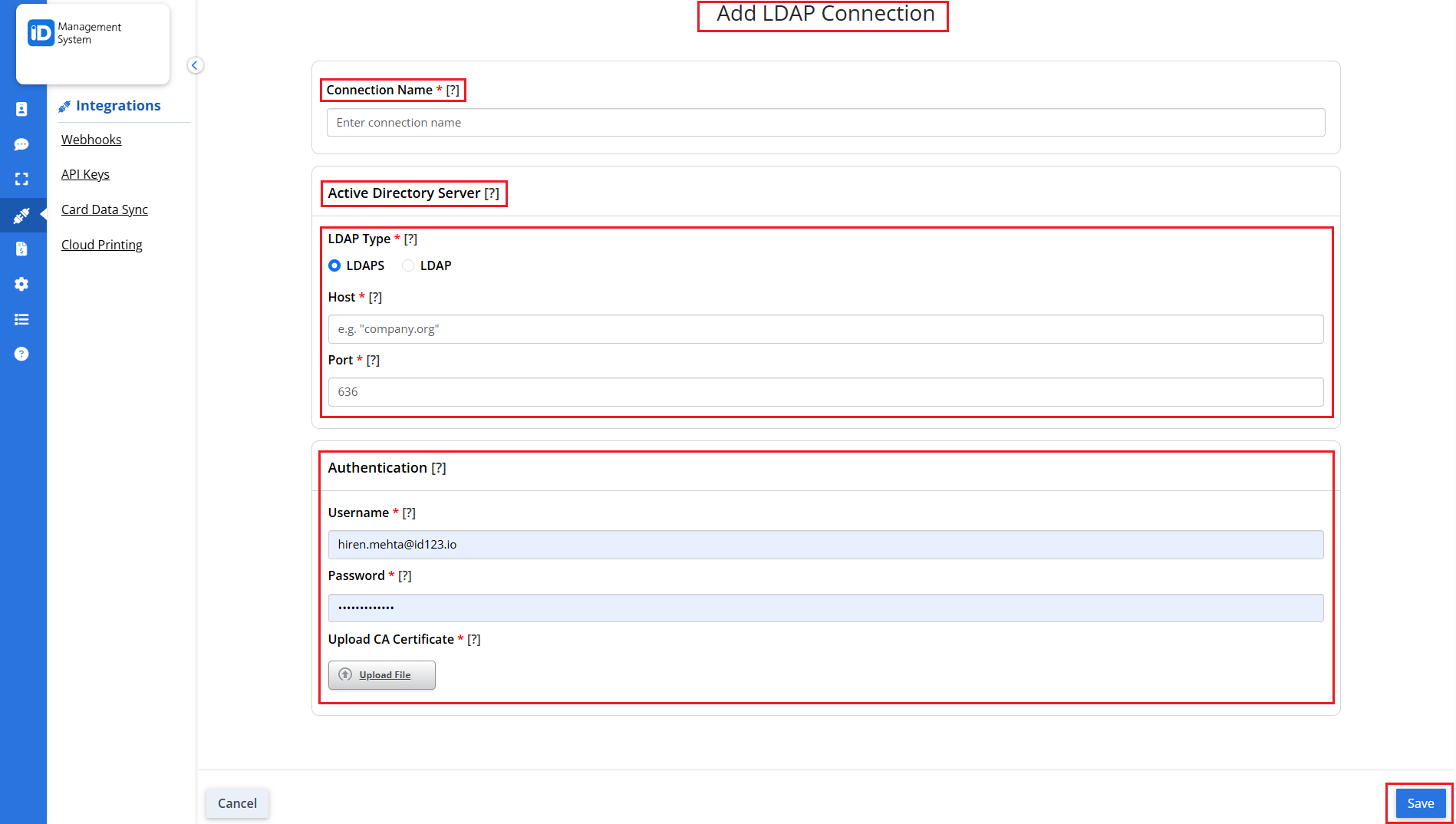
Step 5: Set Up a Data Sync Schedule
- Return to the Integrations menu and select “Card Data Sync”.
- Click the “Manage Card Data Sync Schedules” button under the “Card Data Sync Schedule” section.
Tip: Scheduling your data sync helps automate updates and ensures your digital ID card records stay current.

Step 6: Test Your Sync Connection
- In the Sync Schedule setup screen, choose your previously configured connection from the Sync Connection dropdown.
- Click “Test Connection” to verify that the integration works.
- Once successful, you can map fields between your Active Directory data and the digital ID card fields.
- Click “Next” to continue.
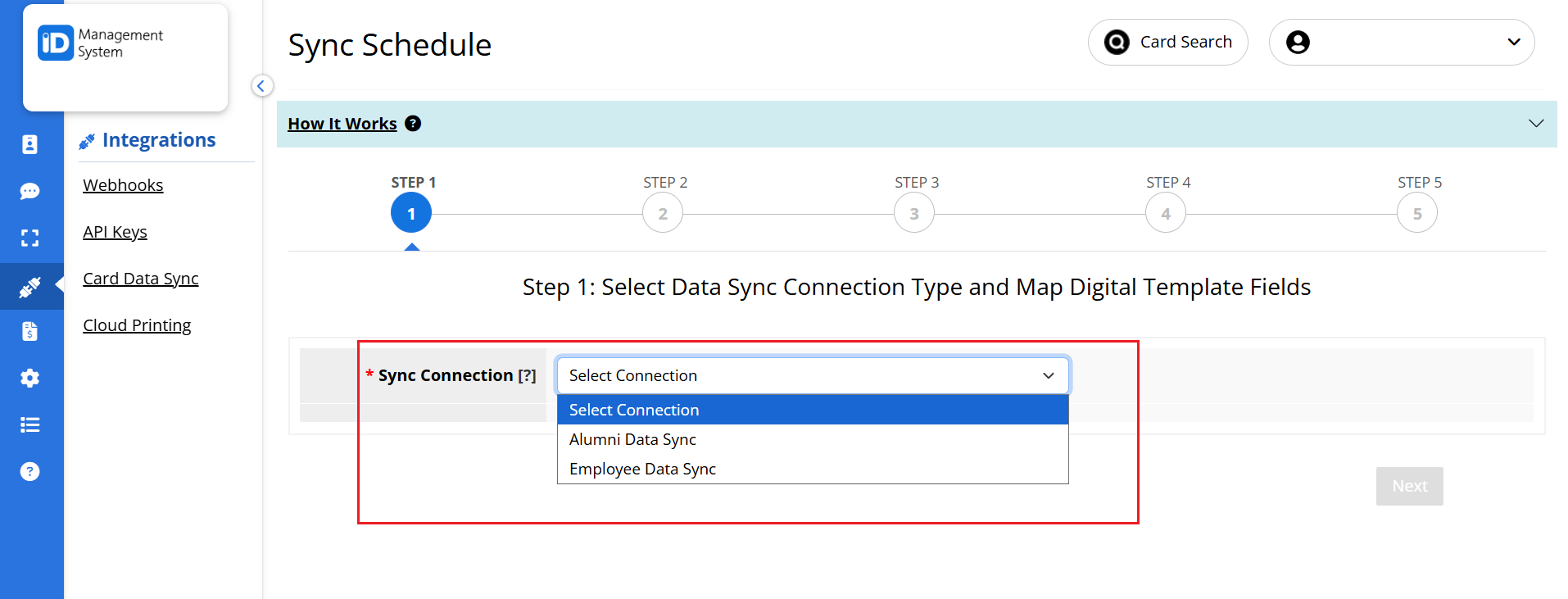

Step 7: Configure the Person Filter and Card Template
- Select a predefined Person Filter from the dropdown or choose “Custom” to manually enter the filter name.
- Choose the appropriate Card Template from the dropdown.
- Map the necessary fields for your integration, then click “Next”.
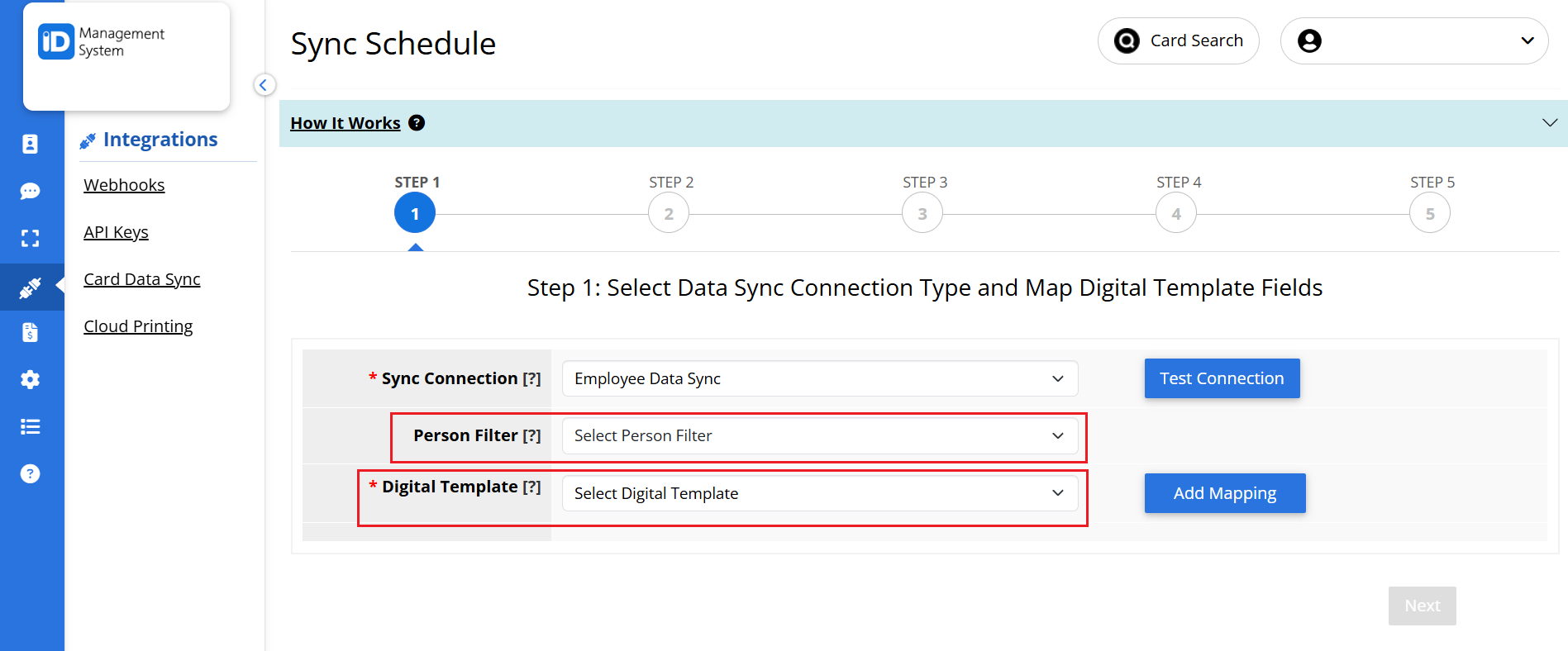
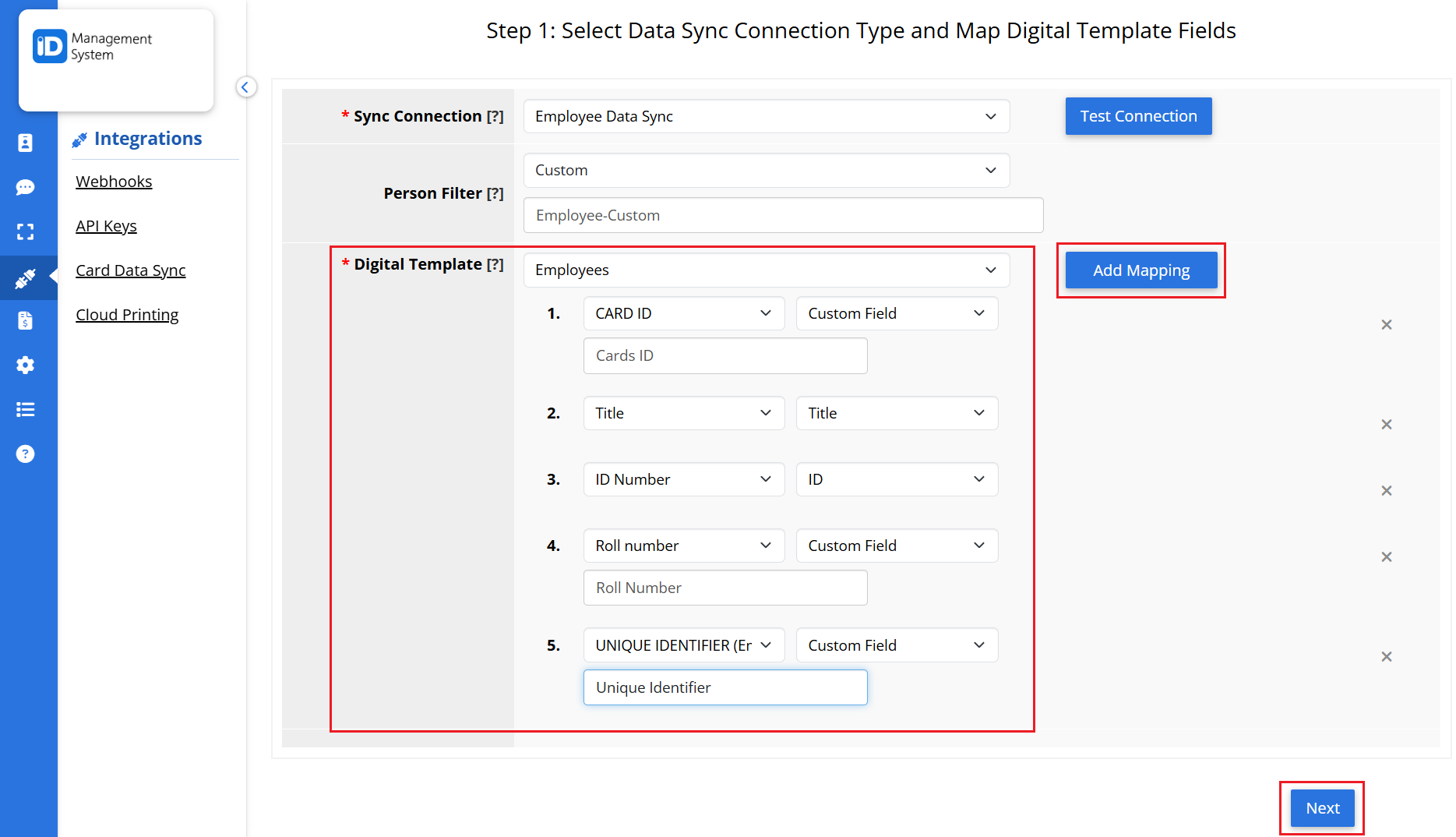
Step 8: Choose a Sync Frequency
You can choose how often you want the sync to run:
- Daily Sync: Select this option to run the sync automatically each day at your preferred time.
- Manual Only: This lets you trigger the sync manually using the “Sync Now” button on the dashboard.
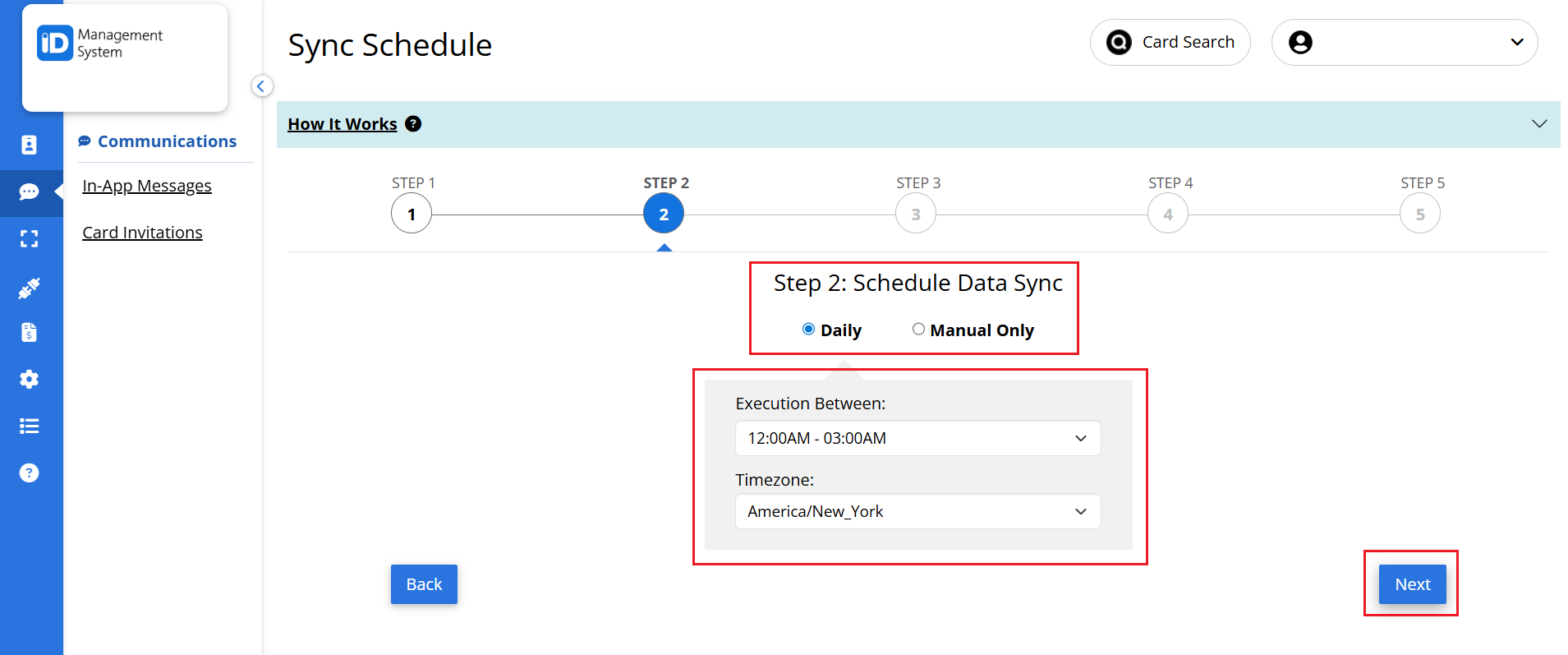
Step 9: Advanced Sync Configuration Options
You have two main options for handling data uploads:
Option 1: Add New Data & Ignore Existing Records
- Best for initial data imports or when only adding new user records.
- Select this to prevent updates to existing records.
- Configure any additional advanced options as needed, then click “Save”.

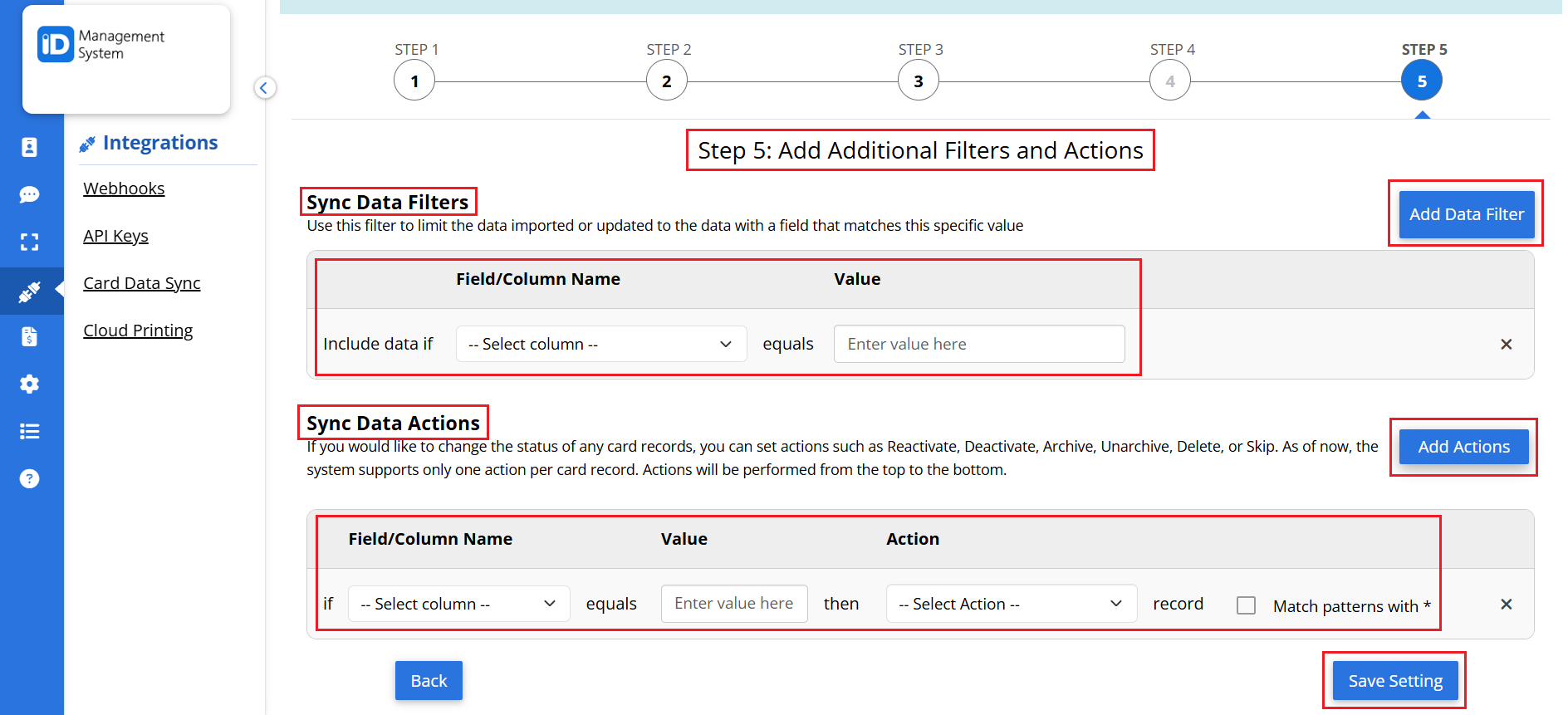
Option 2: Add New Data & Update Existing Records
- Ideal for keeping records up to date.
- Choose how the system handles missing or outdated data.
- Set additional configuration options if necessary, then click “Save”.
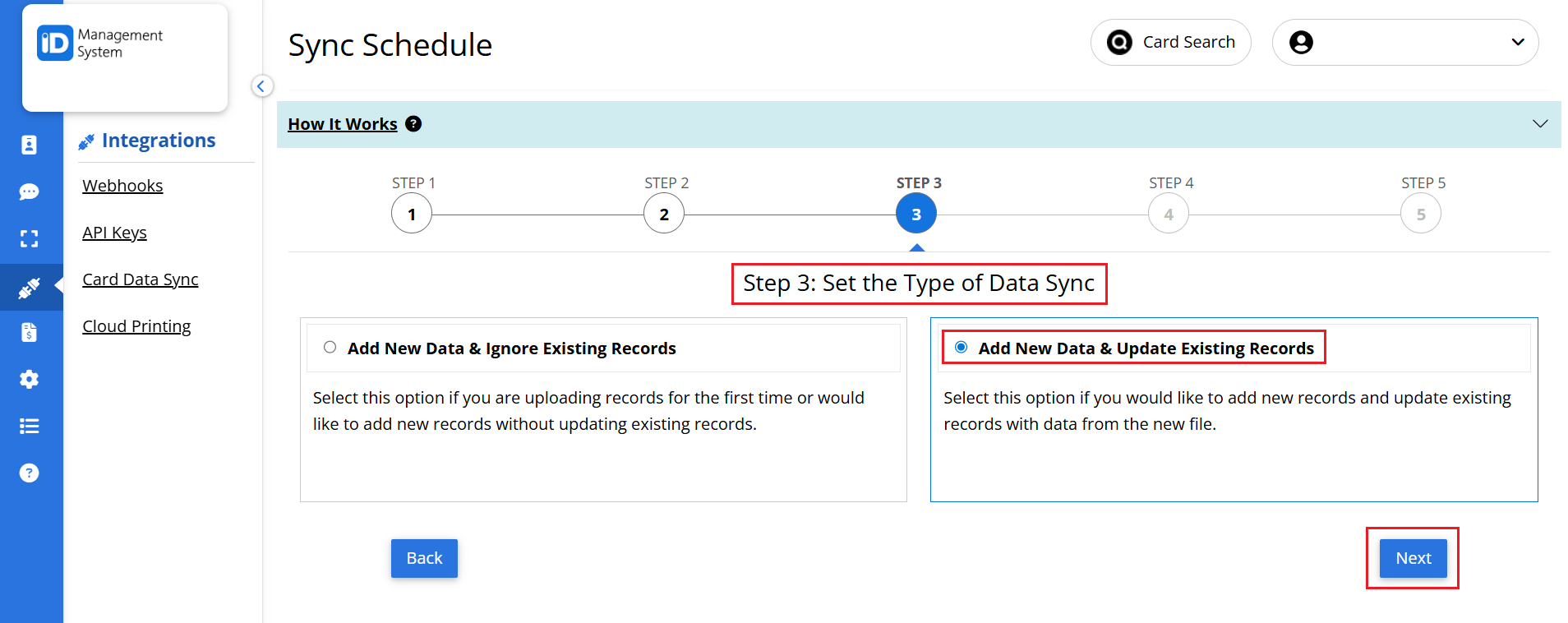

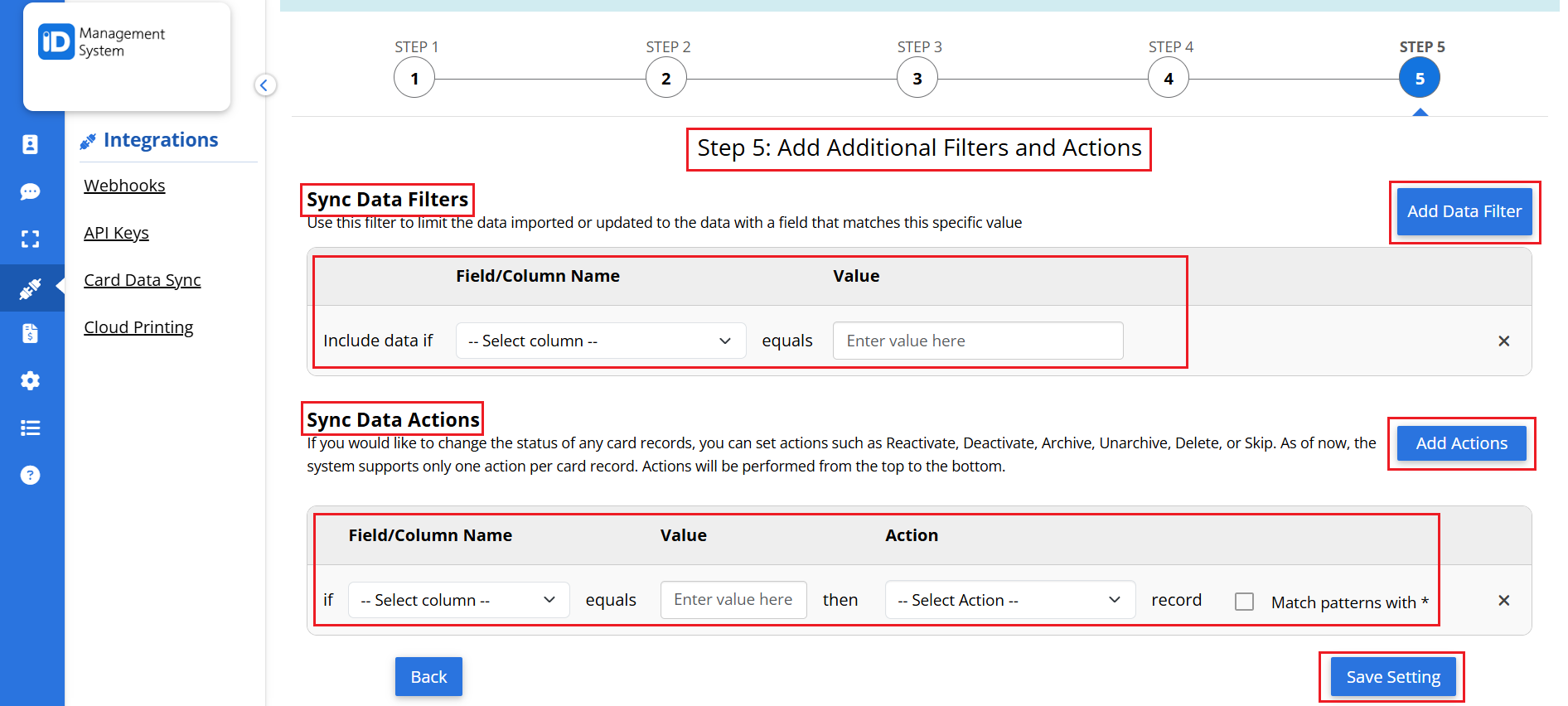
That’s It! Your LDAPS/Active Directory Integration Is Ready
Your Active Directory/LDAP sync is now connected, configured, and scheduled. You can now automate the issuance and updates of digital ID cards using your organization’s existing directory data.
If you need help with your LDAPS integration or uploading certificates, contact our support team.
